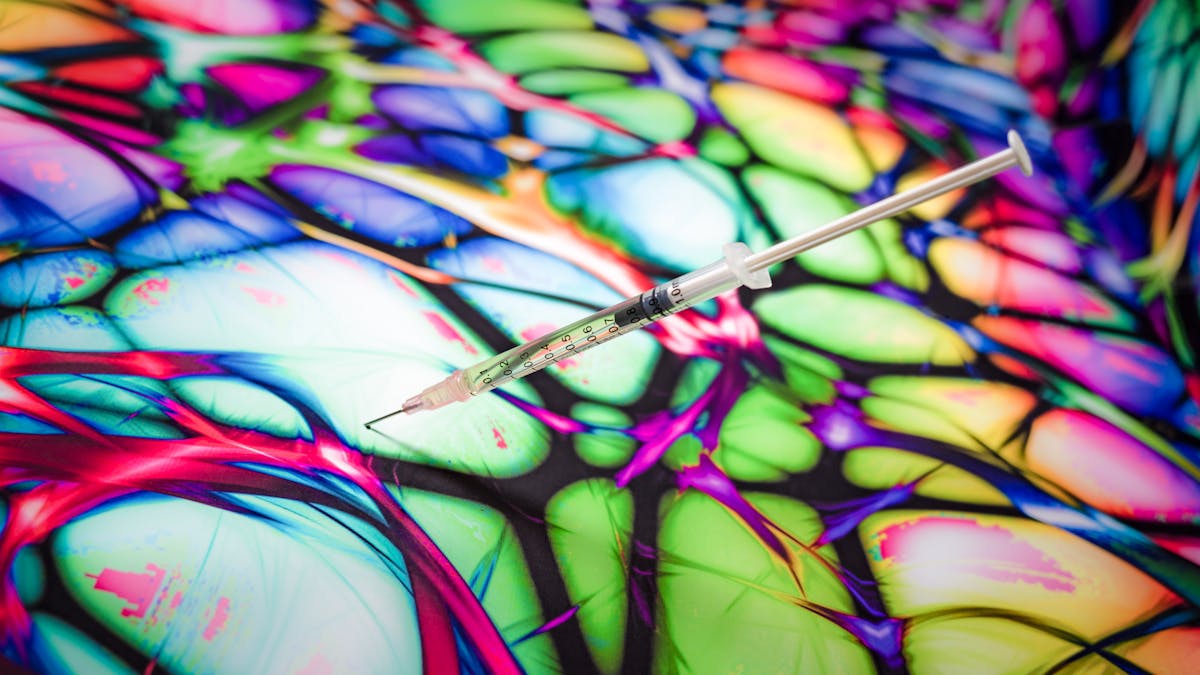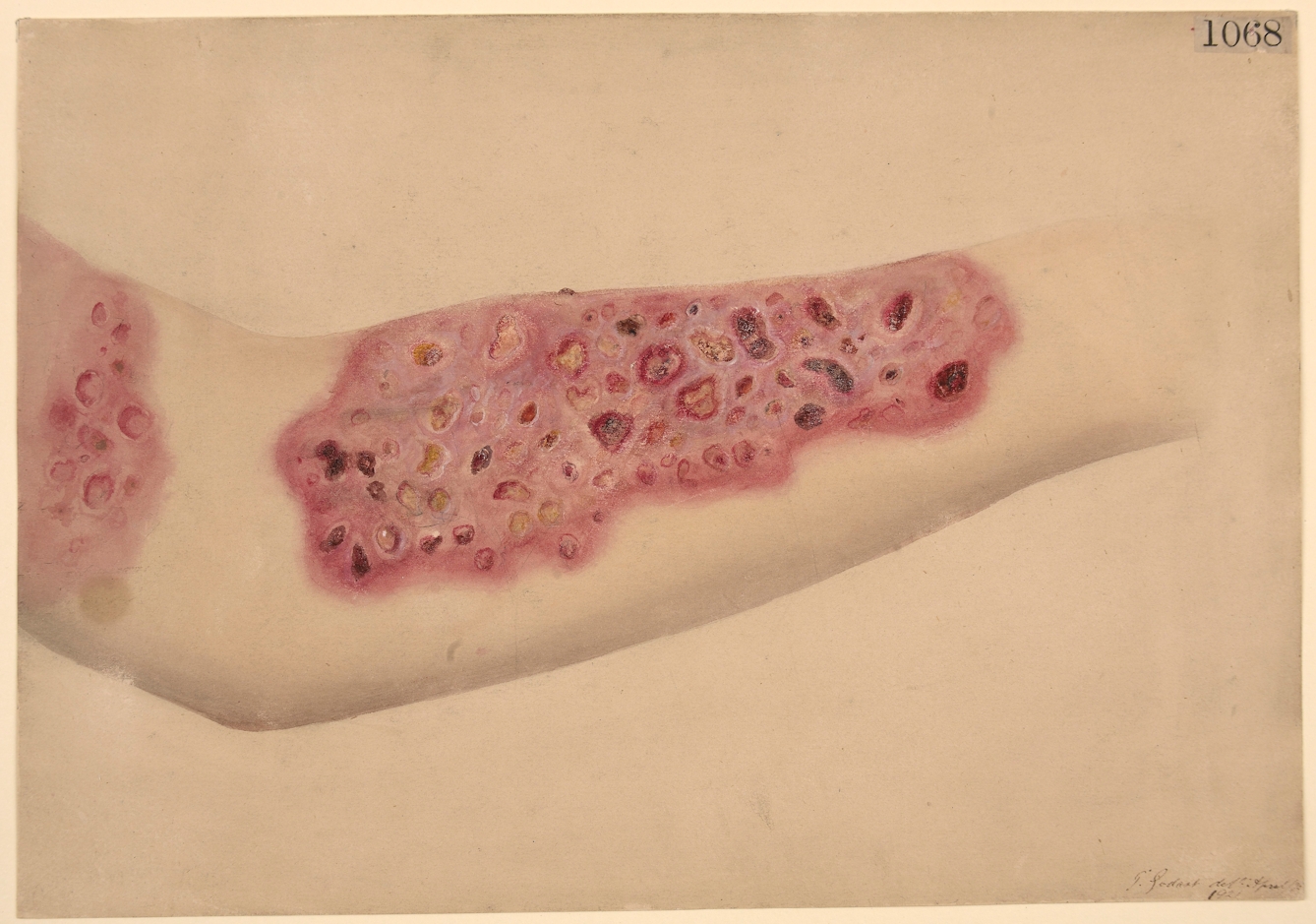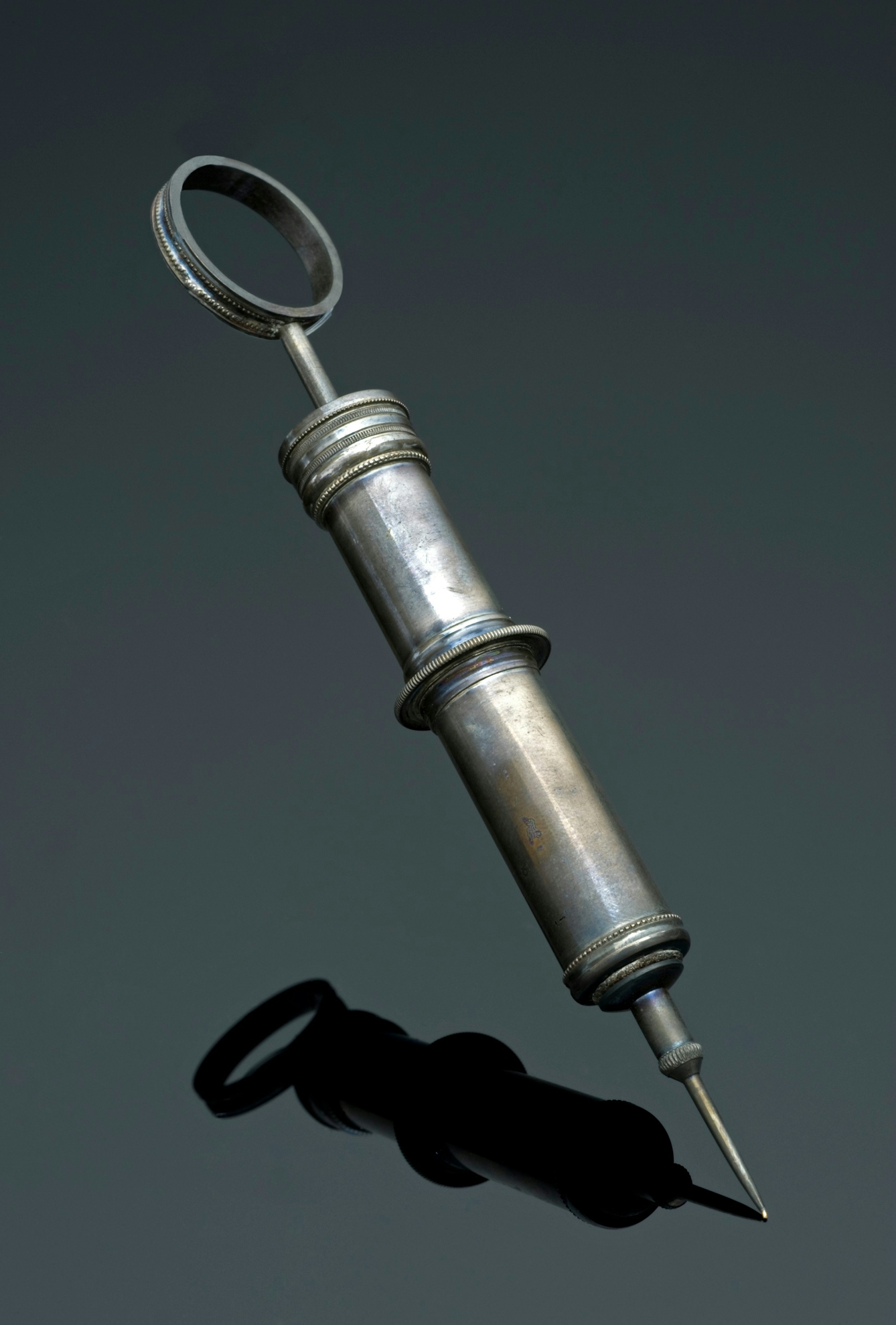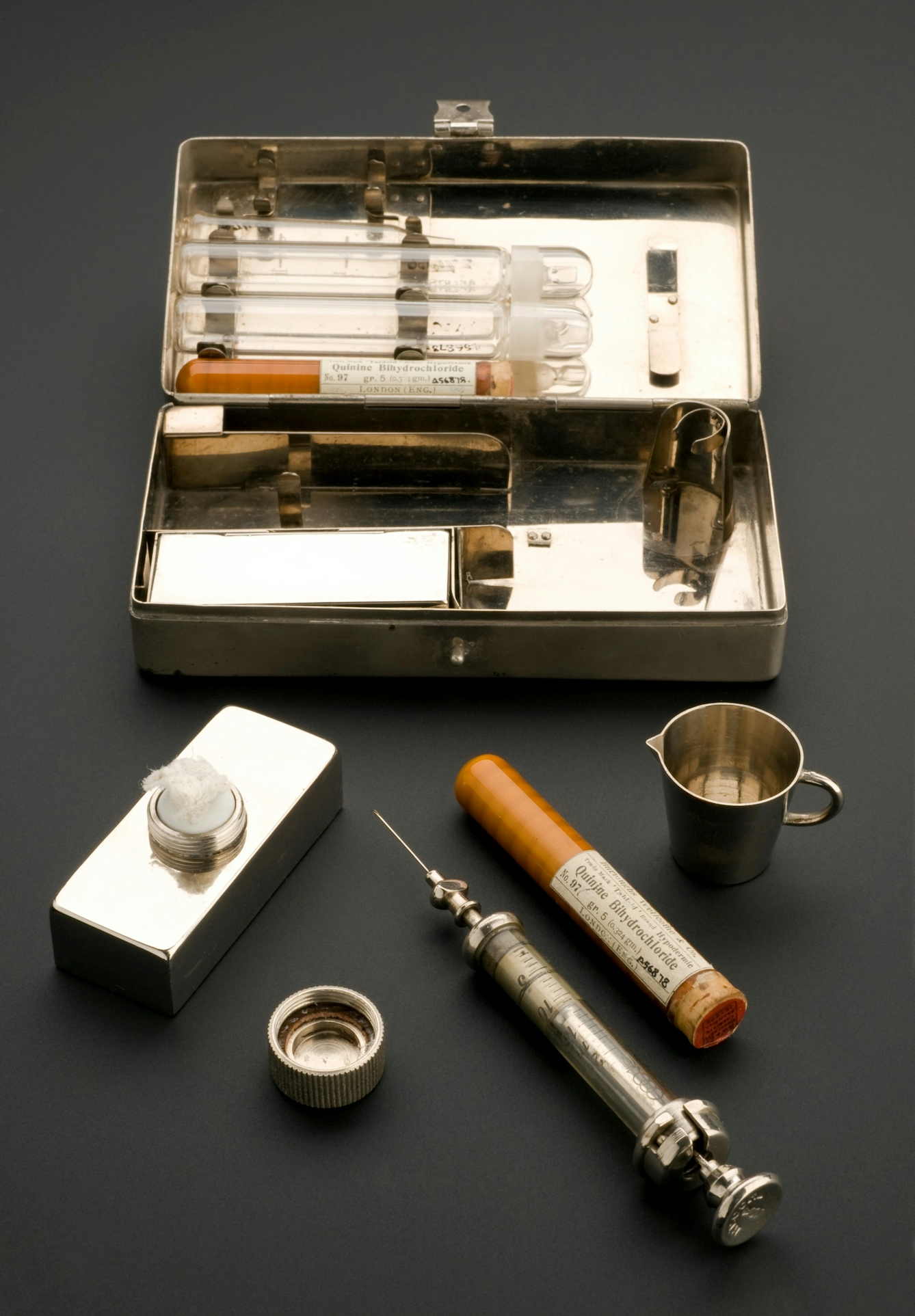The invention of the modern hypodermic syringe followed hot on the heels of the general medical acceptance of how our circulation system works. But these groundbreaking discoveries quickly aided our pursuit of intense drug highs.
Deadly doses and the hardest of hard drugs
Words by Stevyn Colganaverage reading time 6 minutes
- Serial

The lengths to which some drug addicts will go to assuage their needs are quite extreme. Many turn to crime to fund their supply, others to prostitution or even to forms of slavery. Once, when I was working as a police officer, I met a man who had self-tattooed the location of his blood vessels onto his arms. He’d done so because the places he would regularly visit to inject himself – public toilets, mostly – had been fitted with blue lighting that was designed to make it difficult for drug users to find their veins.
Intravenous (IV) intoxicants are the hardest of hard drugs. They provide an almost immediate ‘rush’ as the drug enters the bloodstream and is carried to the brain. They also carry some of the highest risks.
“An extraordinary spectacle was revealed on examination. The entire surface of the abdomen and lower extremities was covered with discoloured blotches, [...] the marks of the injections. He was spotted as a leopard. For four years he had averaged three or four a day – an aggregate of between five and six thousand blissful punctures!”
Nearly all of the drugs involved are addictive and they all result in fatality if the dose is too high. Supplies may be adulterated or ‘cut’ with inferior fillers. Skin lesions and open wounds can lead to infection and disease. The accidental injection of air into a blood vessel (embolism) can be fatal. And using unclean or shared needles or other paraphernalia can spread viruses such as hepatitis C or HIV.
Experiments and breakthrough discoveries
Intravenous drug abuse via syringe is a fairly modern phenomenon; the first recorded cases appeared in 1925, although some reports suggest that needle sharing was occurring in China as early as 1902, and could have been responsible for outbreaks of malaria in Egypt, the United States and China between 1929 and 1937. But that’s because the hypodermic syringe as we know it today only appeared in the late 19th century.
However, the delivery of drugs directly into the bloodstream may have a history that goes back thousands of years, as our ancestors placed extracts from healing plants onto open wounds and lesions, or poured them into specially made incisions.
We know that Sir Christopher Wren, best known as the architect of St Paul’s Cathedral in London, injected dogs with alcohol, opium and other substances to see what effect they had on the animals while he was at Wadham College, Oxford in 1656. His apparatus was a quill attached to a bladder containing the drug. To gain access to a vein, he had to make a cut in the skin.
He also attempted to inject a human subject, the “delinquent servant of a foreign ambassador”, but reported that “the victim either really, or craftily, fell into a swoon and the experiment had to be discontinued”. I can’t say that I blame him.

This watercolour from the late 1800s shows ulceration of the forearm due to repeated morphia injections. It was painted by the librarian of St Barts, Thomas Godart, who was acclaimed for “imitating the delicate though unpleasing shades of colour which are seen in diseased structures with great faithfulness”.
Experiments continued throughout the 17th and 18th centuries but with mixed results. Part of the problem was the suitability of the substances injected, which, depending on the illness being treated, might include things like cinnamon or arsenic.
Another problem was a poor understanding of how the circulatory system works; the English physician William Harvey may have first described the system in 1628, but it was many years before his ideas were fully accepted. A general belief persisted that the effects of an injected drug stayed local to the point of injection and that the drug didn’t travel around the body. It was also widely believed by medical practitioners that a person’s ‘craving’ for opiates was akin to the hunger we have for food, and that you could not become addicted to opium unless you swallowed it. Therefore, they were quite indiscriminate in injecting people for even minor ailments, thus creating new addicts by accident.
This particular belief was shared by Alexander Wood, a 19th-century president of the Royal College of Physicians in Edinburgh, who is credited with being the father of modern hypodermic syringe use. However, it was his contemporary Charles Hunter, a house surgeon at St George’s Hospital, who first realised that drugs administered by intravenous injection do indeed circulate in the blood. He discovered this after he was forced to move an injection site due to the formation of an abscess but found that his patient still benefited from the pain relief administered.
What followed was “a period of sustained and acrimonious debate between Wood and Hunter” but, ultimately, the truth couldn’t be argued with.
Misusing a life-saving invention
The arrival of modern syringes undoubtedly saved lives but also led to a rapid growth in their popularity among drug abusers.
“In the early 20th century addicts were taking doses that were enormous by today’s standards and mostly had overdose experiences when they accidentally hit a vein,” writes Richard Pates in the 2008 book ‘Injecting Illicit Drugs’. “But when narcotics started to become more difficult to obtain and the doses became smaller, communication in the drug subculture facilitated the diffusion of the intravenous technique. [Intravenous] injecting is more economical and the enjoyable rapid effect, or ‘rush’, contributed to the quick diffusion.”
History of hypodermics in pictures

Early syringes were sometimes made of metal. In 1880, Dr H H Kane dismissed this design because they were easily damaged through denting, and those with a glass barrel were far better because they permitted the doctor to see any bubbles of air, dirt, or crystallised morphia.

This example of a syringe is made from silver with a glass barrel. It required the user to turn a screw at the top to inject the liquid, which would have been difficult and required a skilled practitioner.

Hypodermic syringes were soon broadly used, and connected with addiction. One wrote that the “morphia habit” was the fault of the doctors: “it had been contracted, in the majority of instances, through the carelessness of the physician, who had taught either the patient or his friends how to use the instrument.” Another analysis suggested that the problem lay even closer to home, and that doctors and their wives comprised more than 50 per cent of addictions to morphine in 19th-century America.

As well as the more sinister role in the history of addiction, hypodermic syringes became widely used for the intended, therapeutic, purpose. This kit was designed for travel, with a paraffin-coating to protect the needles. It would have been used to administer doses of quinine hydrochloride to protect against malaria while travelling.
Today, both needles and syringes tend to be disposed of after a single use. Plastic syringes can be used for a range of purposes: one in this image is labelled "insulin only".
Some of the health issues surrounding IV drug abuse – particularly needle sharing or contamination – can be alleviated by the use of needle exchange schemes and with colour-coded syringes that prevent users mistaking which are theirs. Another solution is to introduce medically supervised injecting facilities (SIFs) or drug consumption rooms (DCRs). These now exist in at least eight different countries.
But, ultimately, the best way to prevent people from causing injury to themselves with intravenous injection is to get them to stop using needles altogether. And that means dealing with the underlying reasons why people use them, a situation beautifully summed up by the American writer Wendell Berry in his 2003 book ‘The Art of the Commonplace’:
“People use drugs, legal and illegal, because their lives are intolerably painful or dull. They hate their work and find no rest in their leisure. They are estranged from their families and their neighbours. It should tell us something that in healthy societies drug use is celebrative, convivial, and occasional, whereas among us it is lonely, shameful, and addictive. We need drugs, apparently, because we have lost each other.”
During my career as police officer I met a great many needle-using drug addicts. Some worked in the sex industry to maintain their habit. Some had taken to street robbery or shoplifting. Many were homeless or chaotic sleepers. A few had fallen from a great height, having lost well-paid jobs and their families. One or two were literally born with the craving as their mothers had been addicts during pregnancy.
I never once met a happy user.
About the author
Stevyn Colgan
Stevyn Colgan is an author whose debut novel, 'A Murder to Die For', was shortlisted for the Penguin Books’ Dead Good Readers’ Awards. For more than a decade he was one of the ‘elves’ that research and write the TV series 'QI', and he was part of the writing team that won the Rose d’Or for BBC Radio 4’s 'The Museum of Curiosity'. In his previous career he was a police officer in London for 30 years.

